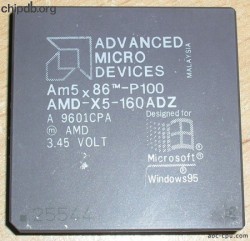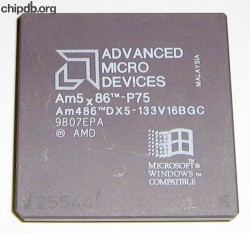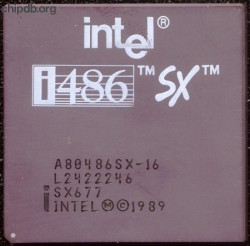I have
massively researched the 486 lineup, and generally speaking the fastest 486 chip would either be the Cyrix 5x86 @ 133mhz or the Am5x86 @ 150mhz (super rare) or a 133ADZ OC'd to 160mhz. The Cyrix has the best floating point performance of the 486 chips second only to the Pentium Overdrive, which pales in comparison to other chips that have high clock speeds, but blows past them
all in FPU performance. This is why I am interested in that chip. I was curious to see just how smoothly games like Duke3D and Quake could be made to run on a 486-class machine.
After lots of research into why post-Pentium machines "feel" different to me, I deduced that it's because the instructions are translated into micro-ops. The Pentium is essentially an extension of the 486 architecture, with multiple pipelines for instructions and a superior FPU, but the same overall architecture and no translations. When you use an 83mhz POD it should be somewhere in the neighborhood of a DX2-80 or DX4-100 (interestingly DX4 chips are actually 3x multiplier, not 4x...) with an incomparable FPU.
I have an Evergreen 586 (Am5x86-133 SMC w/ voltage regulator so it can go on Socket 1) and a Cyrix 5x86-100 on their way to me, and I intend to benchmark these and the POD against each other to determine which really gives you the best performance. By the time the POD and late Cyrix chips were coming out everyone had moved on to the Pentium architecture, so there isn't much technical documentation comparing these late 486-class options. I'll also benchmark some lower class chips just to get a good baseline and confirm older benchmarks - I'll compare SX vs DX, 25 vs 33mhz, DX vs DX2 vs DX4, and I'll see how much worse an Intel Overdrive 25x4=100mhz fares against the likes of a 33x3=100mhz chip. Just gotta get my hands on all the chips necessary for comparison.
If you have any more questions or would like more detail feel free to ask, I love rambling about 486 systems..

Edit: I just re-read a bit of your post and would like to point out that there's either an Am486 or Am5x86, AMD 5x486 isn't proper notation, but I'd think ya mean 5x86. They are rated at 133 and 150mhz (the 150mhz parts are SUPER rare) and the 133 parts have, in the past, been regularly OC'd to 160mhz without much trouble. I've heard of people OCing ADW chips (the chip notation is AMD-X5-133ADW or AMD-X5-133ADZ) to 160, but the ADZ chips are actually rated for super-high temperatures of up to 85degC where the ADW chips are much lower rated (I don't recall the temp) and should be more prone to failure at higher clocks without ramping the cooling up substantially.





